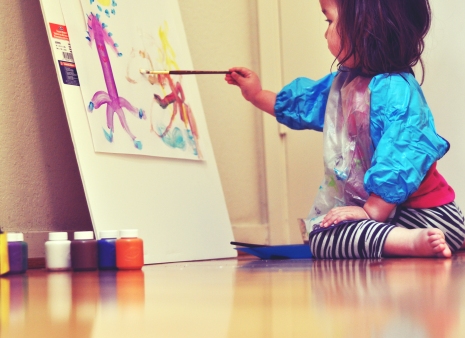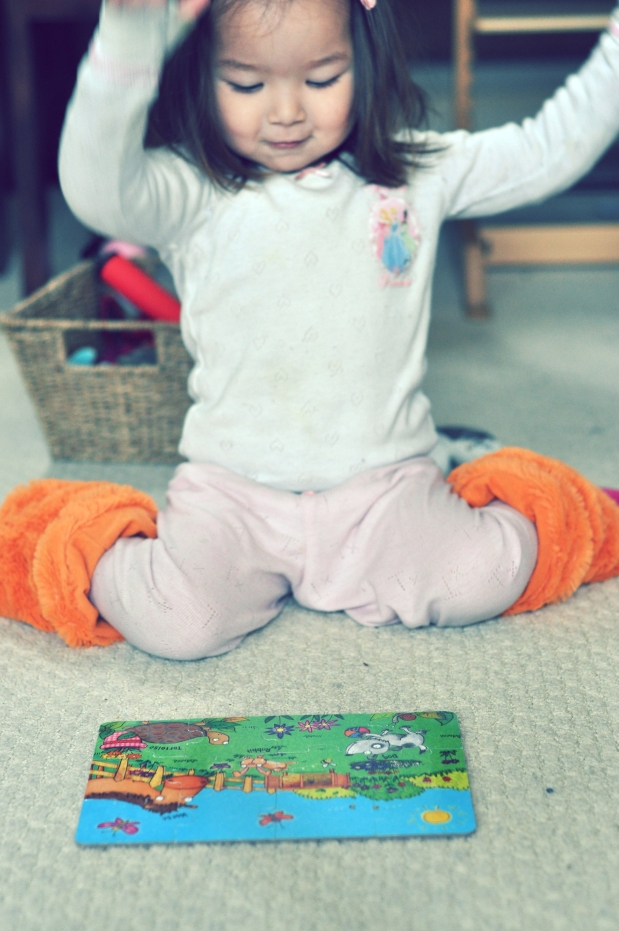Your kid tries to write and it doesn’t look ‘right’. So they get upset and you notice they never want to try again. Or you play a board game as a family, you kid loses and gets really, really stressed out and throws the board over. Your kid can’t do his math problem and throws a massive tantrum about it. What do you do? How can we help our little ones out in the middle of or to prevent these situations?
While it is tough to see our children shut down and in pain when things don’t immediately go their way, there are strategies that help. I myself am a recovering perfectionist, so it was with some pain that I saw my daughter begin to show the same traits. But what can we do to change this?
First, in the heat of the moment, when a child is frustrated and showing their big feelings about it, I validate, empathise and listen. At that point that is pretty much all you can do as their logical brain (the pre-frontal cortex) shuts down when cortisol (one of the stress hormones) floods the brain. In other words, big feelings stop people from thinking rationally. They CAN’T hear us at that point. We know, though, that the best way to get over feelings is to go through them. Listen and say stuff like ‘yes it is frustrating when we can’t do things as we want’ or ‘… you are upset it didn’t come out how you wanted. That is natural. I understand’. Just like adults, kids respond to being heard and validated and when we stay calm their mirror neurons will do their job and pick up the cue from us and (with lots of time to get their feelings out) will start to return to centre. It can take a long time to get these feelings out but it is amazing how healing a good cry can be. They can come back renewed, re-energised and ready to tackle the challenge again from another angle.
Meanwhile, there are things we can do to help re-orient kids’ brains so they aren’t so hard on themselves next time. Here are some of the main strategies I have tried that have helped my eldest begin to really change that pattern (and me, too):
- Focus on effort not on result. We now make a point to cultivate a culture of learning and growth in our family, including through mistakes, perseverance and bounce-back after screw-ups and we make sure that it is clear that
 results/achievement are nice but not what impresses us the most. So, it is a move from outcome- to process-orientation. After a day at school, for example, we ask ‘did you have fun?’ and ‘what did you learn’ (rather than ‘were you good?’ or ‘what grade did you get?’) When we praise at all (we keep praise low as we know it messes with internal motivation), we praise (or notice or comment on) effort in a specific, constructive way that gives kids info on how to do it again, next time (eg ‘I saw you really concentrate and look at the ball for the whole trajectory before you batted it’). We do NOT praise outcome (saying ‘good job’; ‘good girl’; ‘well done on your A’, ‘what a beautiful drawing’, etc. give the message that we value results over effort and that in turn inhibits kids from doing anything that might not immediately and easily yield success – in other words they stop trying things that are hard or things they may fail at, on their first go… which leads to a stagnation in learning, only doing that which comes easy and, in a word, to perfectionism. In order to help a kid become more resilient and focussed on the learning process, praise or notice their strategies and their thinking rather than the result – ‘wow, you put a lot of thought into that drawing’, ‘I saw you try and try and try before you managed to do that. Do you feel proud that you stuck with it?’. ‘You kept at that puzzle for so long, even though it was hard. I know all that effort and learning will help your brain grow’… that kind of thing). Read Carol Dweck’s book ‘Mindset’ if you want to understand this more deeply and check out the video based on her work linked below.
results/achievement are nice but not what impresses us the most. So, it is a move from outcome- to process-orientation. After a day at school, for example, we ask ‘did you have fun?’ and ‘what did you learn’ (rather than ‘were you good?’ or ‘what grade did you get?’) When we praise at all (we keep praise low as we know it messes with internal motivation), we praise (or notice or comment on) effort in a specific, constructive way that gives kids info on how to do it again, next time (eg ‘I saw you really concentrate and look at the ball for the whole trajectory before you batted it’). We do NOT praise outcome (saying ‘good job’; ‘good girl’; ‘well done on your A’, ‘what a beautiful drawing’, etc. give the message that we value results over effort and that in turn inhibits kids from doing anything that might not immediately and easily yield success – in other words they stop trying things that are hard or things they may fail at, on their first go… which leads to a stagnation in learning, only doing that which comes easy and, in a word, to perfectionism. In order to help a kid become more resilient and focussed on the learning process, praise or notice their strategies and their thinking rather than the result – ‘wow, you put a lot of thought into that drawing’, ‘I saw you try and try and try before you managed to do that. Do you feel proud that you stuck with it?’. ‘You kept at that puzzle for so long, even though it was hard. I know all that effort and learning will help your brain grow’… that kind of thing). Read Carol Dweck’s book ‘Mindset’ if you want to understand this more deeply and check out the video based on her work linked below. - Openly and lightly laugh at your own mistakes (as in ‘no big deal’ and ‘this is how we learn’) and let your child see you doing it. Ham it up and be goofy about it. ‘Ooops, Iook at me I read that word all wrong – hahahah’. [I learnt this tip from a talk I listened to by Lawrence Cohen, author of ‘Playful Parenting’]
- Harness the power of stories to illustrate to kids the importance (or at least inevitability) of making mistakes in our journeys toward success. Tell lots of stories about your own learning process and how many mistakes you made along the way. Kids (particularly perfectionists) LOVE this stuff. They lap it up. For a while, my kid couldn’t get enough of stories about potty accidents… then it went on to stories about all kinds of accidents and mishaps, especially by otherwise confident, successful seeming adults. ;) Also, if they are into that kind of thing, read them or tell them stories of famous successful people and point out how many gazzilion times things went wrong before they achieved success (in whatever field from basketball to science, from art to business) and how important it was for those people to ‘keep getting back on the horse’, even after getting something wrong publicly and feeling embarrassed. Emphasise how much they had to practice to become great, too. Real winners are not just people with talent but people who put in the work to keep improving and who develop the resilience to bounce-back when failure inevitably knocks on their door, too. That is where greatness is made.
- On a very different note, there is also a flower essence called ‘Yellow Cowslip Orchid‘ from Australian Bush Flower Remedies which specifically helps people overcome perfectionism and being over-critical of themselves. It is amazing. It is what helped my child start to try to write again – before she was too hard on herself as her letters didn’t come out how she wanted them, right off. Flower essences work fast and well – especially on children, in my experience. They are not ‘homeopathic remedies’ but they work a bit like that. They are vibrational essences of flowers – a famous example of one being ‘Rescue Remedy’ but there are so many ones out there. They are just amazing at helping us overcome psychological or emotional blockages. Sound weird? Sure… but they work, what can I say? Try them. :)
All these strategies I have used on my child (and in a modified version on myself) and they really help. Some of it, like changing the way we ‘praise’ our kids, takes time and… well… practice but they all really help make progress and help kids understand that old adage, that the process of ‘genius’ is 1% inspiration and 99% perspiration.
— — —
Here are some other very helpful pieces on this subject:
Patty Wipfler of Hand in Hand Parenting’s When things don’t go perfectly: How to help kids with perfectionism
For perfectionist parents, Dr. Laura Markham’s My name is Laura and I am a (recovering) perfectionist
A GREAT little video on the power of ‘constructive’ vs ‘destructive’ praise (my words, not hers): Carol Dweck’s research on praise



